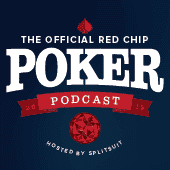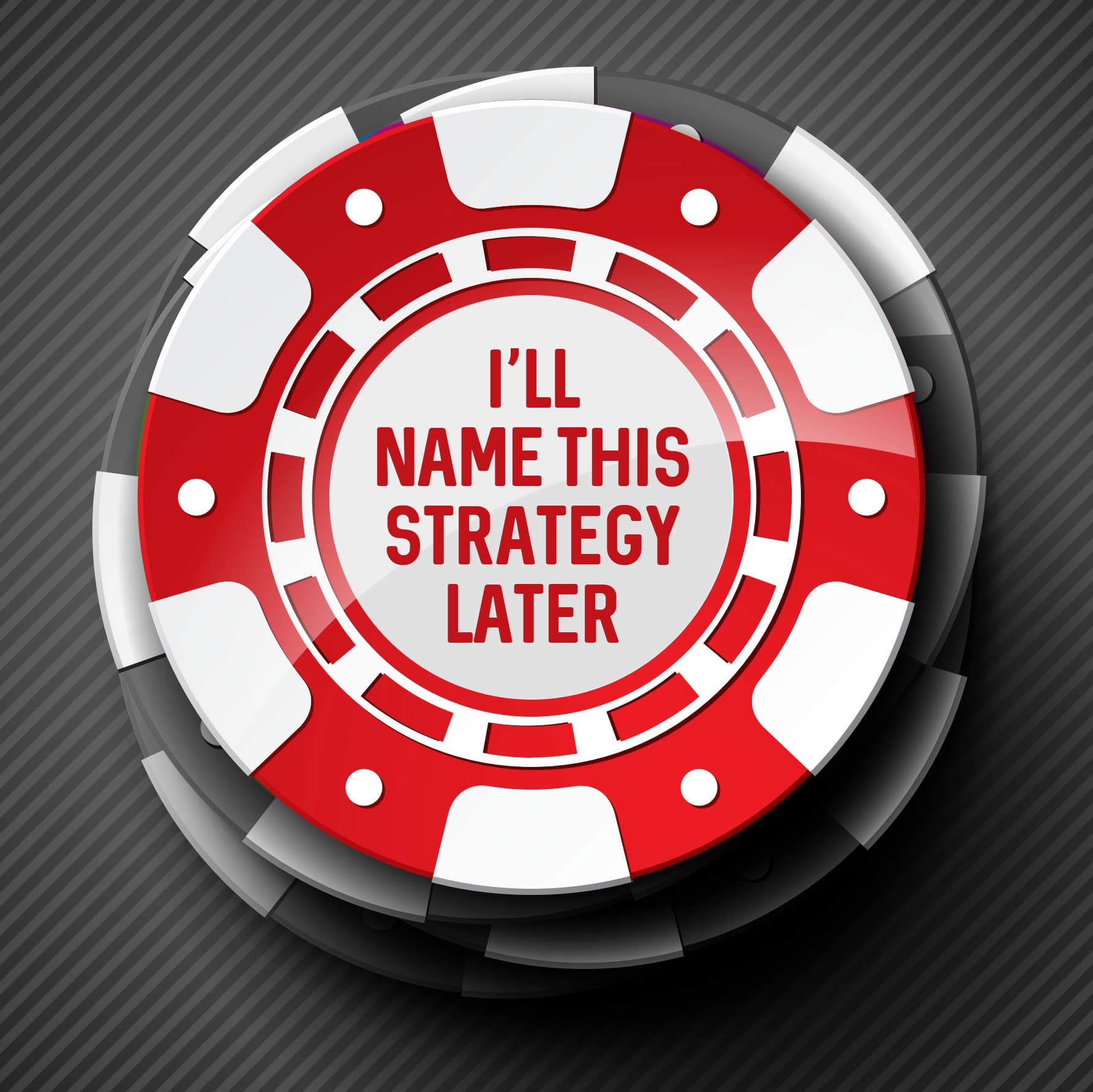This episode is a bit different, literally. What I mean by that is we’re going to talk about thinking differently in poker, and how to create strategies that deviate from the norm to make us profit. Red Chip coach and co-founder Christian Soto joins us, and if you don’t already know him, he’s a top-percentile player and coach known for thinking outside the box and challenging conventional poker wisdom.
We have a wide-ranging discussion with Soto loosely themed around the idea of creating unique strategies to exploit our opponents, with a keen awareness of metagame. He’s a $5/$10 cash player, and also mixes it up with tourneys up to $1K both live and online. He’s just coming off a 2nd place finish in a big online tourney, and he also cashed 7 times in this year’s WSOP.

The timing of his being on the podcast coincides with a webinar Christian is doing on deviations from traditional strategies on November 15th, 2016 (with an archived webinar for those who miss the live one).
LEARN MORE: “I’ll Name That Strategy Later” Webinar with Christian Soto
Soto says the webinar is the best way to really get across his strategy, because it is so dense and comprehensive. When your strategies are deviating from the norm, you have to have an above-average understanding of what might be called “traditional” poker strategy, because that is exactly what you’re trying to exploit by deviating from it. Soto prefers the interactive format of a webinar or class to get across some of his more challenging concepts.
Be the Alpha Reg
Soto’s basic reasoning is this: In the history of poker, anyone who hasn’t remained an outlier has become a dinosaur. This is true at every level of poker, from the microstakes all the way up to the nosebleeds.
“If you approach the game differently, it becomes harder for the game to pass you by,” he said.
“The game is evolving too quickly” to play a “standard” strategy and be a big winner according to Soto.
Burn Your Books
Soto is obsessed with what his opponents are thinking in terms of the state of the game.
The rationale behind Soto’s infamous Burn Your Poker Books article is that if you understand the state of the game, and each opponent’s understanding of the game, you can deviate from where the game is now, and play a style that exploits where the game is now.
“If you take the word of the author in gold, that’s not really going to take you to the top,” he says.
Along those same lines, Soto explains the rationale behind naming his webinar “I’ll Name This Strategy Later”, which was inspired by Soto’s own coach and good friend Matt Berkey, a high stakes pro.
Poker Buddies
Speaking of Berkey, Soto runs with some of the most talented and successful poker players on the planet, and he says the value of his personal network is, “unquantifiable.”
“My expected earnings in my poker career has gone up at least 50-fold,” he says before repeating that it’s really unquantifiable.
He has a private WhatsApp chat group with Red Chippers he has taken under his wing, because he wants to give back to “hungry, driven” players just like coaches like Berkey have given their insights to him.
He also points out that he coaches at all levels to prove that his metagame exploitation strategy works regardless of stakes. This is another reason why he’s so actively involved in coaching players — to demonstrate the profitability of the strategy at all levels, in the real world.
He notes that the main difference in approaching different levels is that the higher you go, the less mistakes your opponents make.
Pre-Flop Equities
Soto expands on the idea that we’re conditioned to think of hands in a black-or-white sense preflop, and that’s not helpful for a strategy that deviates from the status quo.
Instead of looking at hands as “value or bluff”, Soto says there are so many other factors that alter the value of your holding, and gives a great example as to why. Even if most poker players would look at 67s and say, “that’s not a value hand”, those same players might raise that hand when it folds around to them on the button.
He quotes Phil Galfond’s, “No hand has value until showdown” and emphasizes that hands cannot have absolute value pre-flop, because there are so many other determining factors, and so many more yet to come.
Fighting Aggression
Soto discusses the subject of fighting aggression, and how a “passive adjustment should be your last adjustment” failing the approach of putting constant pressure on your opponent.
“Have a strategy that allows you to fight fire with fire,” he says.
“The common conception is that you dial [the aggression] down. That’s super incorrect,” Soto says.
Being the Best
“The best way to understand how to build a strategy is to learn how to beat yourself,” Soto says.
He spends lots of time analyzing his own strategy and learning what the holes are. If he can plug those leaks, his opponents are always at a disadvantage.
The second area he focuses on is the aforementioned “state of the game”, or the “metagame” that his opponents are playing. They have their own strategies, possibly inspired by their studying and training, that can be exploited if Soto is aware.
Finally, Soto does agree that intuition is a key factor. Having played so much poker both live and online, he sees things that other players don’t, simply by being the more experienced player.
Having spent lots of time with solvers and other GTO software, Soto and other serious players have developed an understanding of the game that includes much counterintuitive knowledge. Serious students of the game will uncover surprising and surprisingly profitable insights away from the table as they study, and will have superior knowledge at the table to see their opponent’s strategy from every angle.
Mechanics vs. Theory
Soto talked about what he thinks players should be studying off the table, and he’s not a fan of hand history reviews unless a player has a “mechanics” problem.
If a player is struggling with the mechanics of 3-betting, c-betting, and other fundamentals, then hand histories can be a very productive exercise, Soto says.
Once your game is solid, you need a theoretical framework to truly maximize your value. Learning how to adjust is key, and it’s a difficult thing to teach. That’s why Soto is doing his “I’ll Learn this Strategy Later” webinar.
Be Challenged
Soto does have a reputation for telling it like it is, sometimes bluntly. It’s a challenge, Soto says, that he feels is part of the learning process. It’s how he learned, and it’s how he currently applies pressure to his peers to are struggling to learn the game. Soto knows better than anyone how accountability to one’s peers can be a key driver of improvement in the game.
He talks about his experience of tough love from Berkey during his own learning process as shaping his philosophy towards teaching others.
He talks about starting with Red Chip Poker and coaching in general as a way to validate his skills and talents despite results not speaking for themselves. Now, as he has hit his stride at $5/$10 and mid-stakes tournaments, he needs no such validation. But back then, it was a cornerstone to his development as a poker player.
Dense Strategy: Handle With Care
“It’s a very small group of people that play like this,” he says. And some of those people don’t want him to teach others the strategies they employ.
Because of this, there is a big risk of a player who hasn’t truly understood and processed Soto’s strategies to go out and fail miserably at executing them. They run along the cutting edge of strategies and are precision tools that if wielded wrong can do great damage to your bankroll.
Soto says most of the poker community wins a little, loses a little, or breaks even, and that’s what keeps poker going. Some are big losers and some are big winners, but the big winners are the only ones making a comfortable living at their stakes. The players at the middle are the biggest source of profit for the alpha regs, because while big losers exist, they are rare compared to the “average” players.
Pre-Flop Raise Sizing
“We only raise pre-flop for reasons of isolation and profitability,” Soto says. If we aren’t accomplishing those goals, our pre-flop strategy likely has a leak.
Soto likes to apply the pain threshold to achieve the desired outcome of going heads-up or three ways to a flop instead of players piling into the pot on top of a conservative raise. If $30 isn’t doing the job, go to $40, and if $40 seems outrageous, ask yourself why that should be when it accomplishes your goals at the table of getting folds or going heads up?
“The number I pick is simply for reasons of isolation,” he says.
He also recommends factoring in player types before considering how to handle your pre-flop raise size.
“You have to follow the meta,” he says.
Your Own Way of Studying
“At the end of the day, GTO has taken over the game in terms of how people want to play. However,” Soto says, “it’s level one of learning. From there, you need to move away from GTO and learn deviations and how to target and exploit players.”


Would have liked it if some more examples beside the 67 were mentioned . I understand he doesnt want to give anything away unless you buy the webinar but a few sneak peaks wouldnt hurt. Does this method apply to just cash or include tournaments? I was never a big advocate of studying books , doing math blah blah. Its boring and counterproductive because a good percentage of the game is luck. In only my 3rd tournament June 2015 i final tabled an event (just a daily) with bare basics under my belt . Dealer had to actually put blinds in for me at times. Just proves how variance controls the game more than anything. Cash might be a whole nother animal. What he mentions makes a lot of sense though. Recreational players will always put you on a some sort of big pair hand when you raise . Nothing more satisfying than raising 86 pre and flop comes 9 10 5 759 etc. Their immediate thought process is that you missed the flop . I would pay for the seminar but if its some kind of confusing math equation i wouldnt be able to understand , then its not for me. Explain more
Just checked on webinar . $300 not in my price range also mentions not being simplistic but more on the complicated side which means not for me at this time
I paid 250 for a live greg raymer seminar- it was worthless. I wouldve bought this if i had logged in and seen it- im sure this course could make you/us thousands.